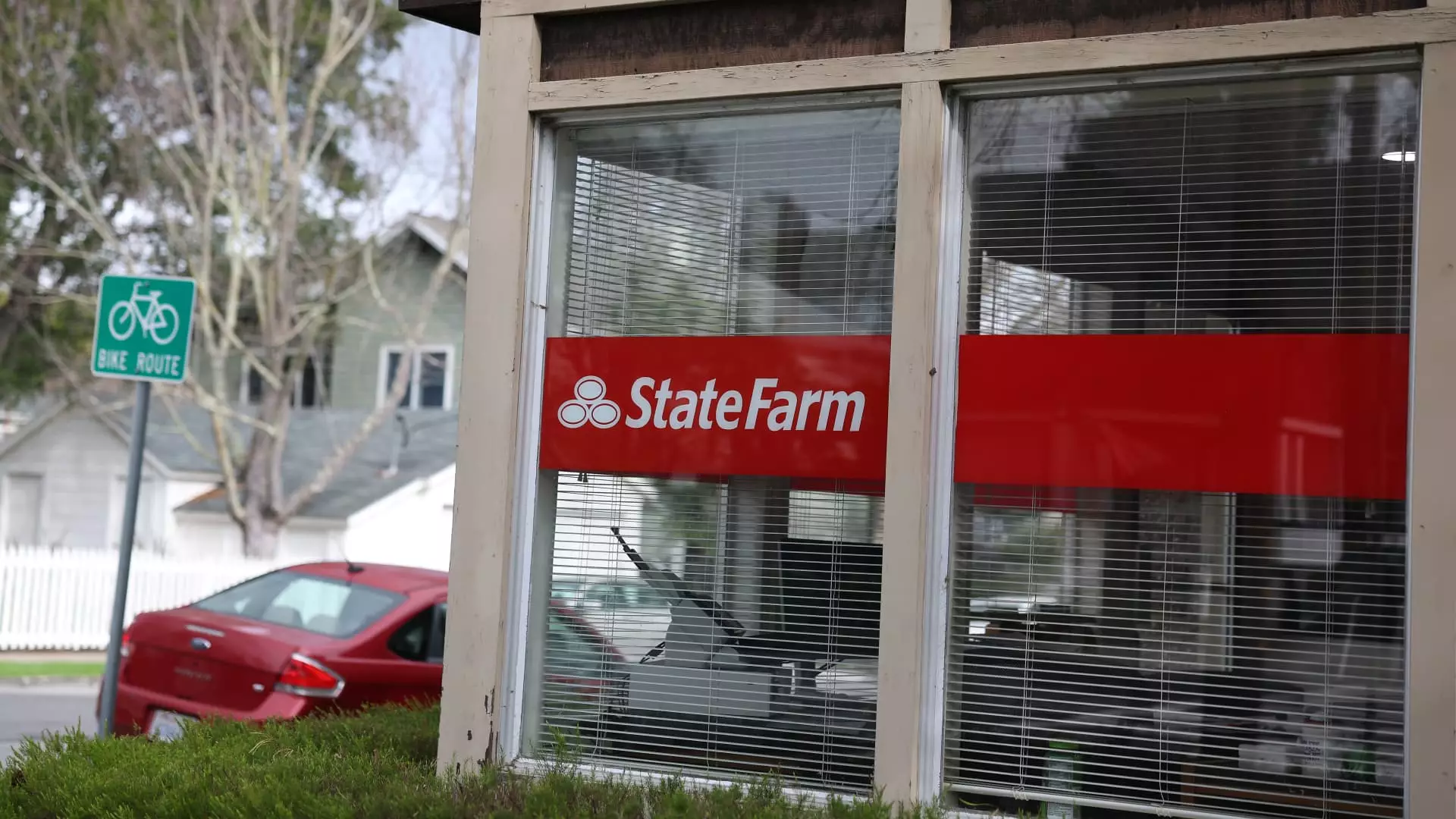In a climate of uncertainty colored by devastating wildfires, State Farm, California’s largest property insurer, is pushing for monumental rate hikes that could profoundly reshape the landscape of home insurance in the Golden State. The three-day administrative hearing recently held in Oakland brought together the interests of the insurer and policies that affect nearly 3 million residents. With the specter of an emergency request looming large, the implications of these increases are staggering—not just for State Farm, but for the homeowners who could see their financial burdens intensify.
State Farm General’s argument hinges on the notion that higher premiums are essential for bolstering capital amidst a “precarious” financial landscape exacerbated by the catastrophic Los Angeles wildfires that wreaked havoc just earlier this year. The attorney for the California Department of Insurance drew an evocative parallel to the Titanic disaster, foretelling a dire fate if measures are not taken to address the burgeoning insurance crisis. This dramatic metaphor raises the question: Are we truly witnessing the impending iceberg collision of California’s insurance industry?
The Financial Reality: More Than Just Numbers
The unfortunate reality is that State Farm is currently shouldering nearly $7.6 billion in direct losses from the wildfires, despite reinsurance provisions reducing the liability to approximately $612 million. This already staggering amount is coupled with the company’s request for a 17% rate hike on homeowners’ policies, following an initial push for a 22% increase. Perhaps even more alarming is State Farm’s concurrent appeal for a whopping 38% raise on renter dwelling policies and a 15% increase for renters. The unyielding question arises: can Californians genuinely absorb such a monumental financial strain?
It is pertinent to note that such rate increases are not merely a knee-jerk reaction to financial turmoil but indicate much deeper structural flaws within the California insurance market. The ramifications of this crisis extend far beyond State Farm’s wallet and touch the lives of homeowners throughout the state. As insurers battle soaring costs in claims and expenses, many have been forced to retreat from California, exacerbating the issue for policyholders who remain. State Farm’s decision to cease writing new homeowners policies back in May 2023 and the non-renewal of over 72,000 existing policies is illustrative of an industry attempting to adapt—and in many cases, fold—under immense pressure.
Consumer Watchdog: A Voice Against Rate Hikes
However, not all parties are aligned with State Farm’s aggressive approach to stabilizing their footing in California. The advocacy group Consumer Watchdog has remained vigilant, pushing back against the insurer’s rate increase proposals. With the sentiment that what’s needed is a justified and sustainable framework, Consumer Watchdog’s lead attorney, William Pletcher, has articulated the multi-faceted concerns surrounding the rate hikes. “The company hasn’t made the case required under the law,” Pletcher announced, suggesting that a mere decline in the proposed increase does not absolve State Farm of its administrative responsibility to provide justifiable, transparent rationale for hikes.
There’s a deeper moral narrative woven into this debate—one that emphasizes the insurance industry’s duty to its consumers. A quick fix in the form of radical rate hikes risks financially drowning Californian households, especially in a turbulent economic climate where residents are already weathering the storm of rising living costs.
Is There a Path Forward?
The state’s ongoing efforts to remedy the insurance crisis through a “Sustainable Insurance Strategy” introduces a glimmer of hope amid the disarray. By allowing insurers to utilize catastrophe modeling and the predictable costs of reinsurance, regulators aim to build a framework conducive to thoughtful, long-term rate formulation that will hopefully stabilize the marketplace and curtail systemic risk. In light of these developments, one must ask: will this strategy be implemented effectively, or will it be met with bureaucratic inertia and face intense pushback from insurers reluctant to yield to a more transparently regulated environment?
As voices such as economist David Appel suggest that a 17% rate increase may be a necessary evil for State Farm’s financial stability, the question of moral implications looms large. Homeowners and renters are at the mercy of an industry beset by its own ill-fated decisions, forced to contemplate the potential exodus of significant providers from the state and confronted with increasingly perilous insurance landscapes. The potential consequences ripple far beyond the immediate numbers, hitting at the core of Californian livelihoods. If one thing is certain, it’s that the battle lines are drawn, and the stakes could not be higher for everyone involved.

